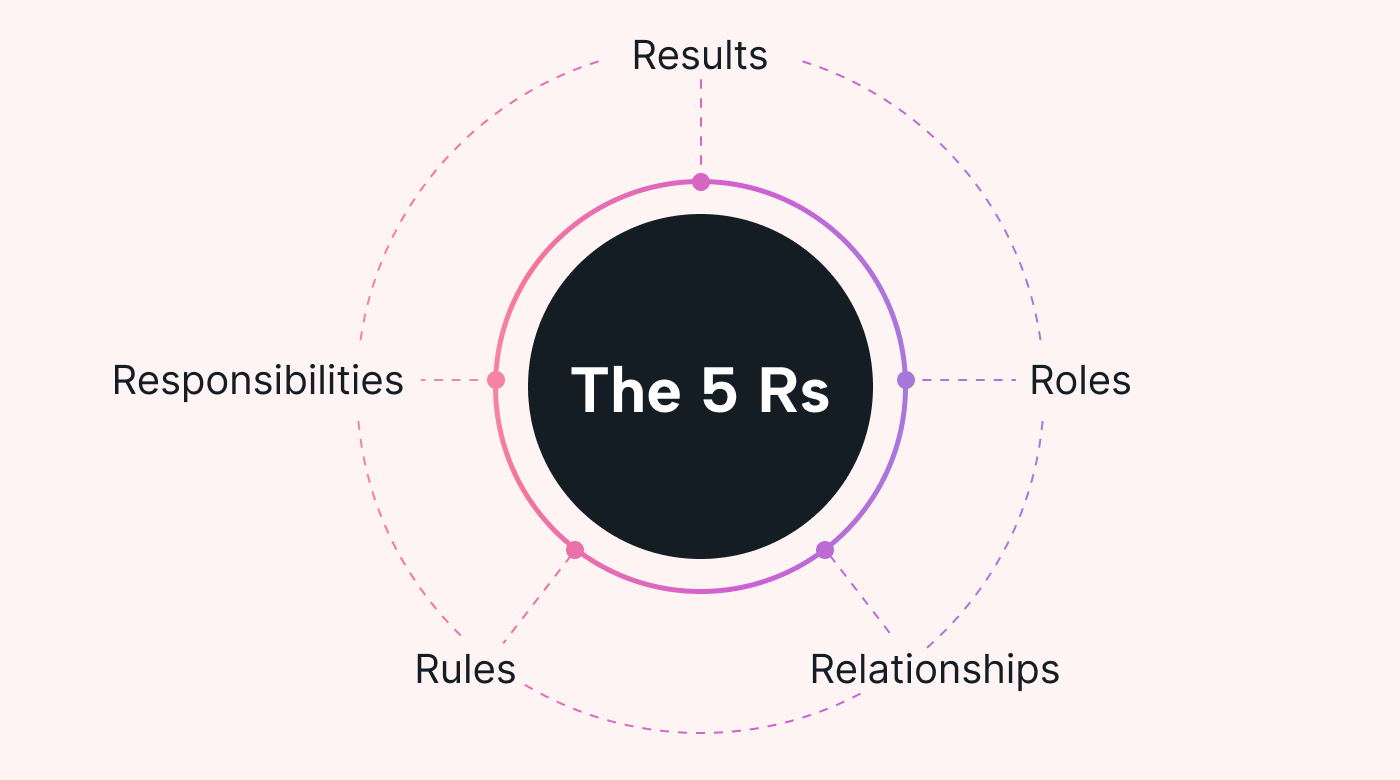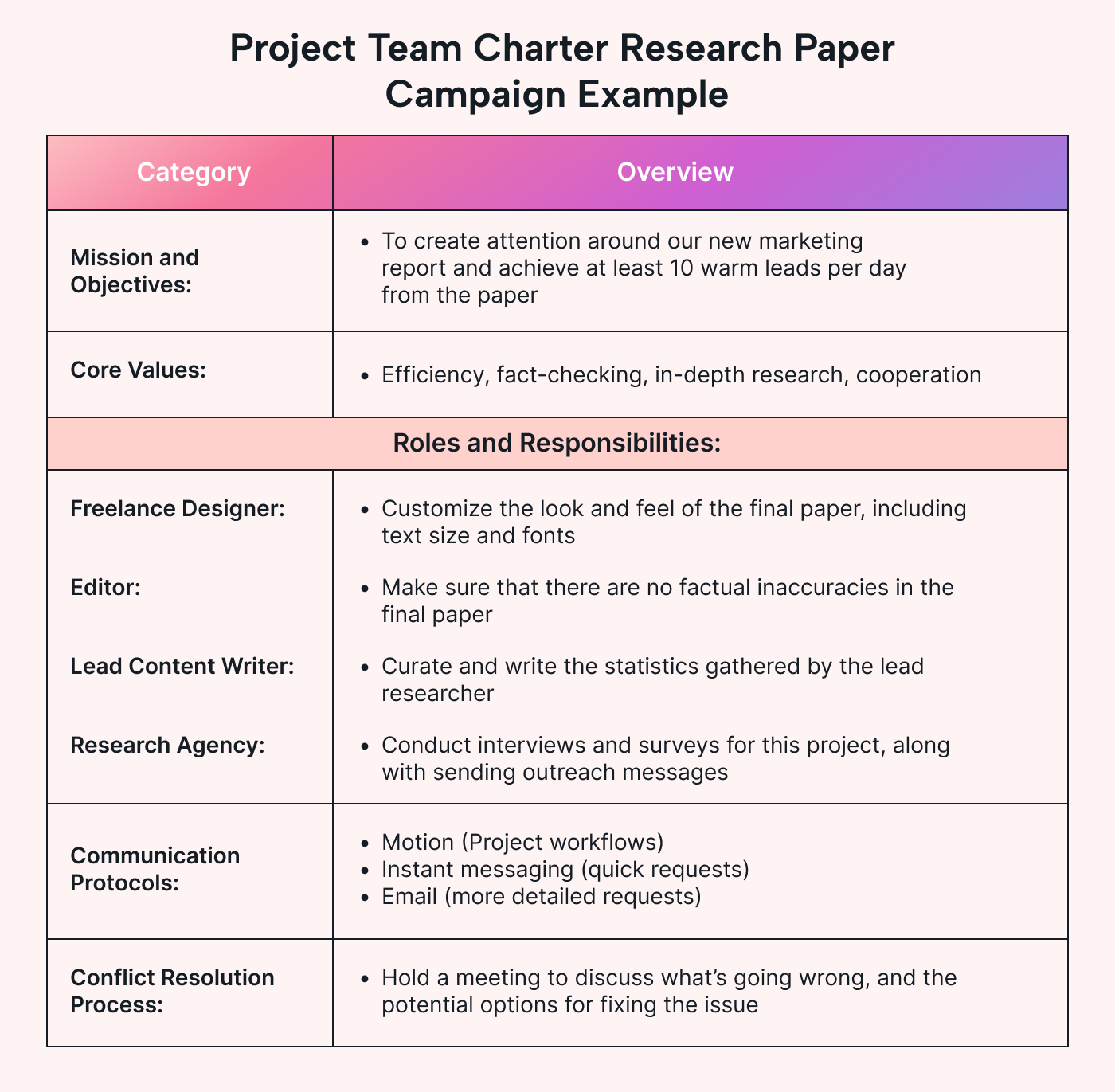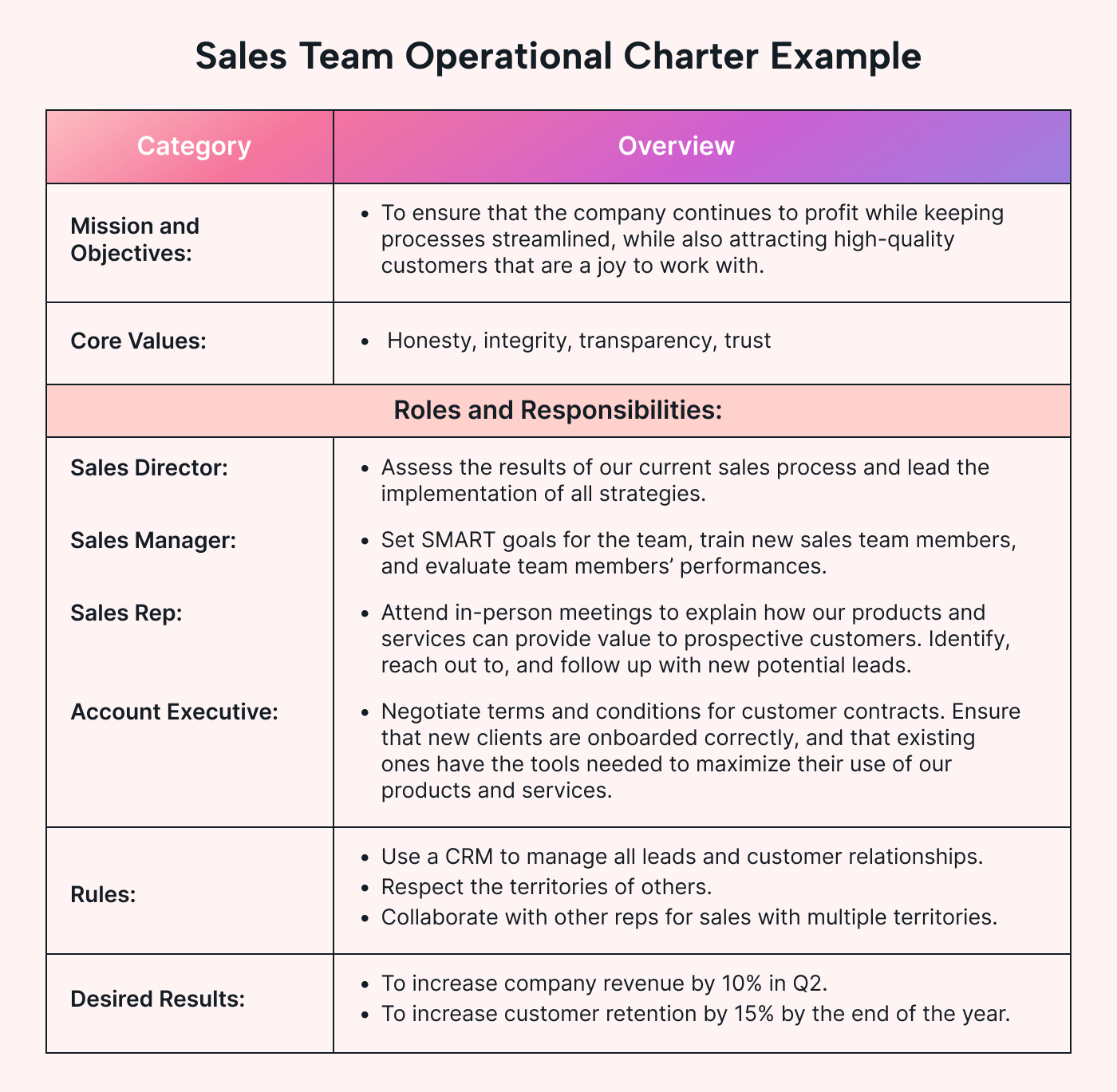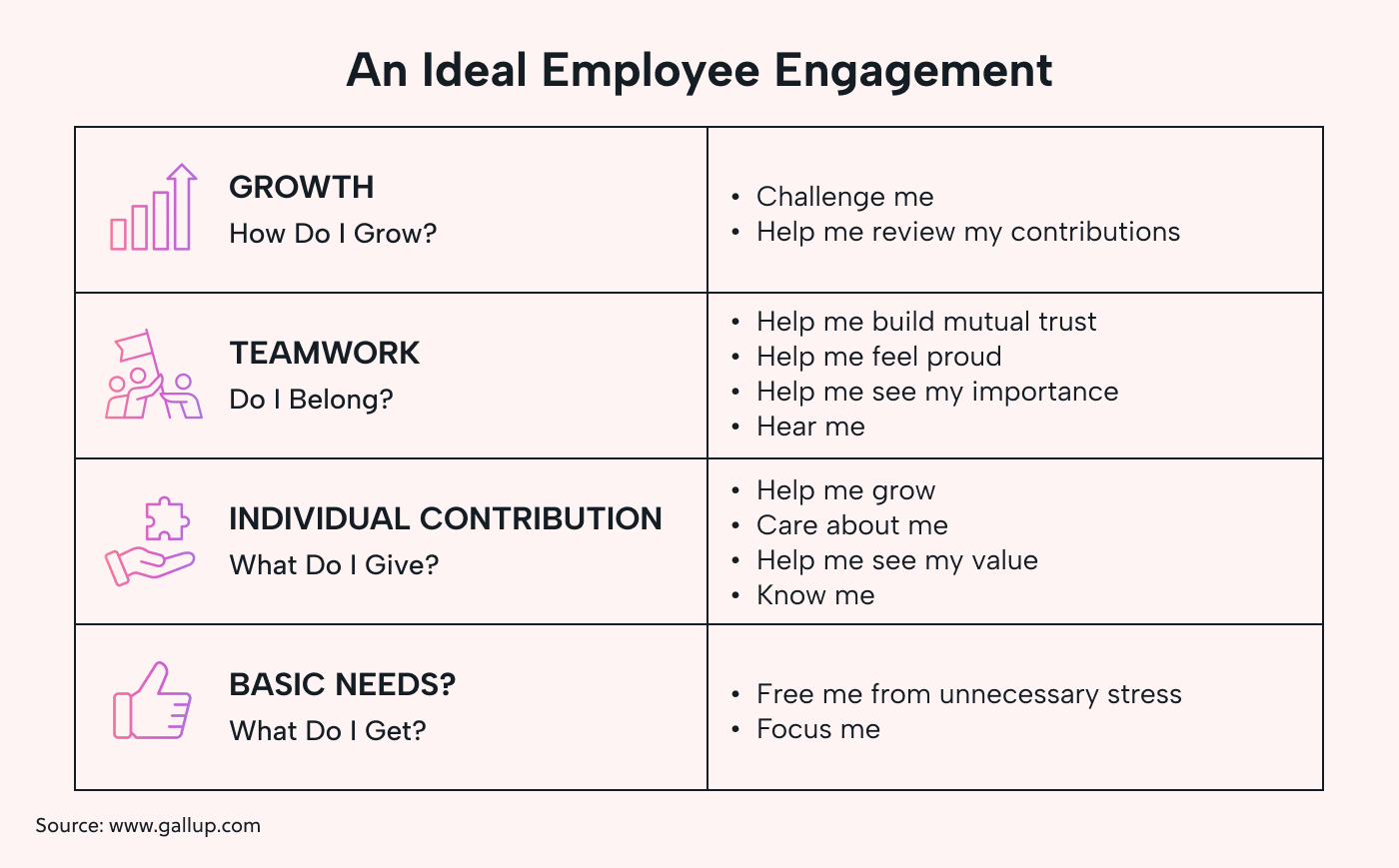How many times have you sat down at the end of a working year and dissected your key performance indicators (KPIs), only to find that you've fallen short? Often, a lack of direction may be one of the reasons that your team didn't meet its goals.
Many businesses struggle to put the right team and project scaffolding in place, which can be a huge challenge when trying to scale and serve your customers. Especially if your team operates remotely, without a mutual sense of direction, you wind up with project delays and more failed completions than you'd like. Fortunately, solutions exist — and a team charter is one of those.
Team charters allow you to define your goals and delegate responsibilities appropriately. This article includes what a team charter is — along with some team charter template examples. We'll also cover how your team charter can work as a broader part of your strategy.
What is a team charter?
A team charter is a document that outlines how your team will operate. You'll highlight the areas each member is responsible for and your expected means of communication.
Team charters include both overall and individual performance objectives. You can also have conflict resolution processes to deal with disputes and minimize delays quickly.
What are the benefits of using a team charter?
Arguably, the largest benefit of using a team charter is that it helps leaders guide their teams. Gallup found that only 22% of employees believe their leaders have a strong sense of direction, and a team leader not knowing where they're going can make project management challenging. For example, team members might not understand what they're working toward — which may result in short-term thinking and a lack of motivation.
Team charters also make communication clearer. When you design one of these documents, you'll make the channels to speak to each other very clear (e.g., emails are for detailed requests). Moreover, you'll know exactly who can help with specific tasks if you're struggling. Thanks to these, you'll spend less time needing to follow up with others and have the knowledge that your request won't be deluged in messages better suited for another channel.
Another advantage is that team charters set very clear guidelines for what's expected of everyone. Sometimes, team members may take on more tasks than they should, which can delay higher-leverage assignments. Besides causing bottlenecks in your operational processes, these situations can demotivate employees who feel like they're making no progress in task completion — despite putting in significant hours. However, because team charters clarify everyone's roles and strengths, these documents can reduce the burden and potentially help ensure a strong employee engagement framework.
When should you use a team charter?
You should use a team charter when designing new teams during a major company reshuffle. It's essential to analyze what you did well and poorly in the previous phase of your business to help build a winning team and avoid repeating old mistakes. Considering you have a blank canvas, you can also implement a new culture with your team charter — one reason why you should also use one when creating new teams from scratch in a startup.
Team charters can, however, also help well-established teams and companies. Creating one of these documents enables you to understand how you uniquely contribute to your organization's overall strategy. Once you have that information, you can create better systems for long-term success.
What are the 5 Rs of a team charter?
Results
The results you get as a team will directly impact whether the organization can deliver positive customer results. It's impossible to develop an outstanding team charter without considering your objectives; your lack of direction will show if you miss these out.
You need to identify team and individual objectives in your team charter. After understanding both, you can bring them together. Because everyone's performance requirements are catered to, you can enhance your chances of reaching your goals.
Roles
Your team members should complement one another's strengths, and compensate for weaknesses to reduce potential constraints. Identifying everyone's roles will make fulfilling your project or business requirements much easier, as you'll know which areas of your team are the strongest and where you might need to make new hires.
Relationships
Everyone must understand whom they can turn to if they need assistance. Likely, certain team members will regularly collaborate closely on assignments. For example, a social media manager must liaise with your designers to create engaging visuals for your online platform. Outlining how you expect each person to work together will save a lot of communicative back-and-forth in times of need.
Rules
You need a clear code of conduct that your team adheres to. For example, a team of writers might have a rule that they're not allowed to update other current members' articles. It's also good to set workflow rules, such as which software you'll use for different tasks. Setting clear boundaries makes it easier for your team to respect each other and minimize conflict.
Responsibilities
The best team charters identify what each team member does on more of a granular level than roles. For example, an email marketing specialist would be responsible for sending newsletters and monitoring clickthrough rates. When your team knows specifically what everyone does, following up and moving projects forward becomes easier.
 |
How to customize team charters for your team's specific needs
Each team will have different needs and objectives, and they'll also be different in size. For example, marketing won't have the same needs as IT.
Ways to customize your team charter include:
- Identifying your specific team objectives and how they fit within the company.
- Creating charters for both team leadership and all employees.
- Outline your team's budget.
- Critically assess what you did last year and where you can do better.
If you're feeling stuck, don't worry. You can customize the key elements of the templates provided later in this guide.
Why you need to customize team charters
You need to customize your charters so each team knows where it fits within the broader organization and its specific roles for achieving outlined strategies and objectives. This is especially important in larger organizations, where workflows sometimes become unclear. It's fine and even encouraged to use the same template base, but the text needs to be customized as each team has different requirements, needs, and responsibilities.
When you customize your charters, you guarantee a more collaborative process by setting clear ground rules. Moreover, you'll help foster a positive team culture. That, in turn, will increase the level of quality in your output and outcomes.
How to create a team charter
The steps in this section are for creating a team charter:
Start with your broader company objectives
Each team within a company has to serve the business, so it's essential to start with broader company objectives. After identifying these, you can ensure that your charter aligns with the organization – allowing for better synchronization and improved results.
Narrow down to your team's goals
After outlining the company's objectives, you must narrow down your team's goals. This will give you a clearer vision of why you're creating the charter, which will make it more effective once implemented.
Understand what each person within the team does
Understanding what each person does within the team makes allocating tasks much easier. For example, you'll know to ask the copywriter why this week's blog post hasn't yet been drafted if that occurs. Because everyone has better guidance on where to go when they have questions, you'll avoid many project management challenges (like project delays).
Work together as a team to create this charter
Working together will create more of a coherent team charter, ensuring a higher quality of work. As a result, you'll increase your team and organization's chances of success.
Bring everybody's individual KPIs into perspective
Every employee has key performance indicators (KPIs) to meet. For example, a sales manager may need to convert 10% of their leads. Bringing everyone's KPIs into perspective during the team charter development stage will help others meet personal objectives. This allows the company to serve its customers better and foster individual career growth.
Note where you may have issues operating as a team
Every team has challenges (e.g., skill shortages could be solved through providing training to team members). Noting where you may have challenges lets you solve issues before they arise, making it easier to avoid major discrepancies that could hinder coherence and efficiency.
Refine your team charter
Refining the team charter after its first draft will allow you to see if you're missing any angles. This will result in a better-finalized team charter, which leads to a better sense of direction among team members.
Identify your ideal work processes
Outline how you'll work together as a team. For example, which software would you use to manage your workflows? Understanding and defining these in advance can result in better productivity and more seamless project progress.
Get everybody's signatures
Getting everyone's signatures – literally or figuratively – is important as it ensures everyone's commitment to the team charter and outlined processes.
When to update a team charter
The best time to update a team charter depends on your business cycle. How often do you need to revisit your objectives and adjust them? For teams like marketing, the answer might be quarterly. But for others, such as programming, looking at your goals and updating your team charter annually might make more sense.
You should also update your team charter when major changes occur. For example, you'll probably need to revisit your processes when key employees leave – especially if more than one goes at the same time. Or when an important new team member arrives.
Team charter vs. project charter
Many people confuse team charters with project charters, but they have a few core differences. Project charters are for individual projects and focus on different aspects than team charters. For example, project charters involve specific deliverables for that venture. Furthermore, project charters include individual task budgets and the desired result.
On the other hand, team charters are – as the name suggests – designed specifically for organizing your team. You can customize team charters for short-term projects for full-time employees and contractors, but they often don't include project scopes and whatnot. Instead, you'll focus on the overall team mission and structure (often for multiple projects).
Rather than using one or the other, it's better to know how to write project charters and team charters. That way, you'll have the complete picture and finish each task much faster.
Team charter template examples
You can use team charters for both permanent and project-by-project ones. Sit down with your coworkers and outline everything you want to achieve and how you'd like to work together. Check out these project and operational team charter examples if you need assistance.
Project team charter
The project team charter here shows a team working together on a research paper campaign. It includes both permanent employees and external clients, along with freelancers.
 |
As you can see, each person's roles and project responsibilities are clearly defined. As a result, the team should have fewer problems following up where necessary.
The project team charter outlines clear SMART goals, allowing everyone to stay on track and not lose sight of the big vision. To ensure efficient communication, the team has outlined precisely which platforms they'll use for different tasks and requests.
This project team charter is customizable for both short-term projects (e.g., fewer than three months) and long-term campaigns.
Operational team charter
Compared to the project-based team charter, the operational version focuses more on the entire team. We see that each sales team member has clearly defined roles transferable to multiple tasks and that the template also largely focuses on long-term team members. If additional help was required from external sources, you could keep this long-term charter and customize the project-based edition.
 |
The specified ideal outcomes aren't related to a specific project; instead, they're a total of everything the team's working on. The core values also focus more on the human side than the project-based charter, where they're largely about speeding up the project implementation process.
How Motion can help you meet your team's objectives
Team charters help outline everyone's responsibilities and avoid disastrous hits to your productivity from lack of clarity, like failure to understand your team's role in achieving company objectives. Team charters can also help increase employee engagement, keeping your most talented employees involved (and less likely to leave). This, in turn, can reduce further project disruptions and remove the need to spend more time and money on recruiting replacements.
Team charters are a natural segue into Motion's project management and task management capabilities.
With the help of Motion, you'll find it easier to allocate tasks built from your team charter and stick to your core values. Put in your tasks, assignments, dependencies, priorities, and deadlines. Motion will serve them up on your team's calendars using AI to help finish them on time.
Change how you manage your teams and projects by trying Motion free for 7 days.






